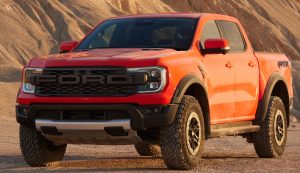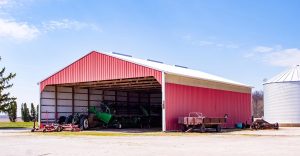Tractor-mounted Forestry Mulchers: Selecting the Right Rotor for Power and Efficiency

Forestry mulchers mounted on tractors are essential tools for vegetation control, land clearing, and maintenance in agricultural and forestry environments. Their performance, however, is closely tied to a key internal component: the rotor.
Choosing the right rotor is not just a technical detail – it directly affects productivity, power draw, and machine longevity. Understanding how rotor design aligns with tractor output and application requirements is fundamental for optimizing field operations.
Rotor configuration: a technical cornerstone
The rotor is the central rotating component of a mulcher, equipped with cutting tools that engage directly with vegetation. Two primary rotor types are used in forestry mulchers: fixed-tooth rotors and swinging hammer rotors.
Fixed-tooth rotors feature rigidly mounted teeth and are engineered for high-intensity tasks. Their aggressive cutting profile is ideal for processing large-diameter trees, stumps, and dense brush. These rotors typically demand more power and deliver a finer, more uniform mulch, especially when operating in dry or rocky soils.
Swinging hammer rotors, on the other hand, use pivoting blades that respond flexibly to impact. They are generally lighter, absorb less power, and are more forgiving in rough conditions with hidden debris. While less aggressive, they offer excellent performance for lighter tasks and maintenance in green areas or on soft terrain.
Matching rotor type to tractor horsepower
Selecting a rotor must begin with an honest assessment of available tractor horsepower. A forestry mulcher for tractors typically covers a wide range – from compact units for 80–100 hp machines to industrial heads designed for tractors exceeding 250 hp.
Lower horsepower tractors benefit from rotors with low power absorption technologies, such as Bite Limiter systems. These rotors use a limited depth cut design to prevent excessive strain on the driveline and reduce fuel consumption. This configuration allows smaller tractors to operate efficiently without compromising cutting performance on small to medium vegetation.
High horsepower tractors, in contrast, can handle fixed-tooth rotors with high mass and rotational inertia. These systems enable continuous cutting through heavy materials and are preferred in demanding environments where throughput is critical.
Ensuring rotor compatibility with PTO output, torque availability, and cooling system capacity is essential to prevent overload and mechanical failure.
Operational scenarios: from light brush to heavy-duty clearing
Each rotor type offers distinct advantages depending on the environment in which it is used. In vineyard and orchard maintenance, where fine debris and limited space are common, swinging hammer rotors provide the flexibility and lower impact required. Their ability to handle uneven terrain and scattered organic matter makes them a reliable choice for day-to-day use.
For fire mitigation, power line maintenance, and trail creation, fixed-tooth rotors provide the necessary cutting force and precision. Their design is suited for reducing large-diameter material and grinding stumps flush with the ground. In these cases, productivity per hour and mulching quality are top priorities, and a robust, high-inertia rotor is a strategic asset.
When working in transitional environments – such as mixed forests or hilly terrain – a hybrid approach or a rotor with interchangeable tooth types may offer a balanced solution.
Key selection parameters and maintenance insights
Selecting the appropriate rotor also requires considering soil composition, the average size and hardness of material to be processed and expected working hours per day. Rotors must be balanced, not only for performance but also to minimize vibration and wear on bearings and drivetrains.
Routine maintenance – such as checking tool wear, torquing fasteners, and inspecting rotor alignment – ensures safe operation and extends equipment lifespan. Using appropriate tools for tooth replacement and keeping spares on-site reduces slow-downs and stoppages.
Final considerations
Rotor selection in tractor-mounted forestry mulchers is a decision that must align machine capabilities with field requirements. By choosing a configuration that optimizes energy use and matches the expected workload, operators can ensure consistent results, reduce fuel costs, and extend the service life of their equipment.
FAE: high-performance tractor mulchers engineered for professional results
Founded in 1989, FAE is a leading manufacturer of professional-grade heads for tractors, skid steers, excavators, tracked carriers, and special vehicles. With decades of experience in forestry, agriculture, infrastructure maintenance, and demining, the company is known for developing highly efficient equipment for land clearing and vegetation control.
FAE’s tractor-mounted mulchers are built using top-tier materials and state-of-the-art technologies, ensuring excellent mechanical strength, high productivity, and long-term reliability.
These attachments are designed to manage intensive workloads, with the capability to process wood, trees, roots, shrubs, and stumps up to 20 inches in diameter.
The product lineup includes a broad selection of models, each developed to meet specific operational requirements. From smaller units for mid-range tractors to high-power solutions for the most demanding tasks, FAE provides equipment capable of delivering top-level results across a wide range of applications.
Whatever the working environment – dense forests, open fields, or mixed terrain – FAE tractor mulchers offer reliability, efficiency, and strength, helping professionals achieve precise and consistent results in land clearing and vegetation management projects.






